Spontaneous Generation
Pre-existing cells
- In 1852 Robert Remak made the conclusion that cells divided to form new cells, that is cells came from pre-existing cells
- His conclusion was reached after studying cells from chicken embryos
- This discovery is often attributed to Robert Virchow who in 1855 proposed the phrase omnis cellula e cellula (all cells come from cells)
- Prior to these announcements, it was believed that life arose spontaneously from non-living matter
NOS: Testing the general principles that underlie the natural world; the principle that cells only come from pre-existing cells needs to be verified
- Up until the 17th century, the consensus was that life was spontaneously generated (living organisms arose from non-living matter). This was believed due to:
- The lack of technology - microscopes were not extensively used
- Observations being made - Aristotle observing insects forming from dew or van Helmont observing a mouse appearing from a jar containing a sweaty shirt and wheat
- The idea supporting the cultural and religious beliefs of the time
- From the 17th century scientists such as Francesco Redi with his maggot and rotting meat experiment began collecting evidence to test and verify that life required life to exist
- However, it was Louis Pasteur's experiments involving swan-neck flasks that provided sufficient verification to convince scientists that cells could only come from pre-existing cells
- The universal acceptance that cells come from pre-existing cells also comes from the idea that :
- The highly complex ultrastructure of cells has not been able to be synthesised by humans
- All the known examples of growth are a result of cells dividing by mitosis or meiosis
- Although viruses have a much simpler structure, they can only be produced inside a host cell
- The universality of the genetic code suggests that all life evolved from the same original cells
- The translation of the 64 codons produces the same amino acids for nearly all organisms - although there are some rare minor variations that have likely arisen since the common origin of life
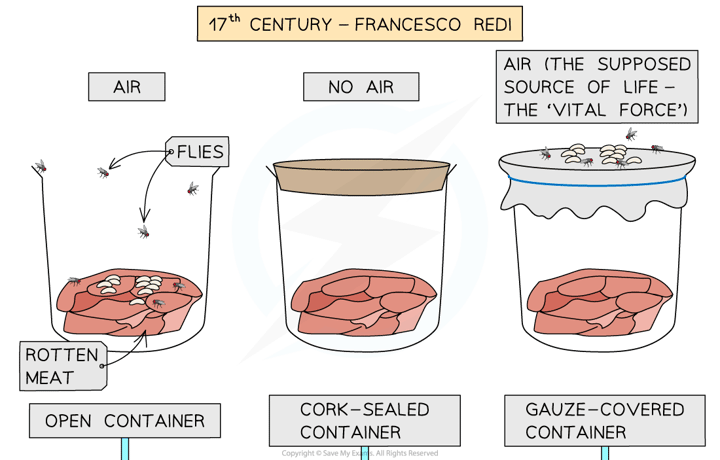


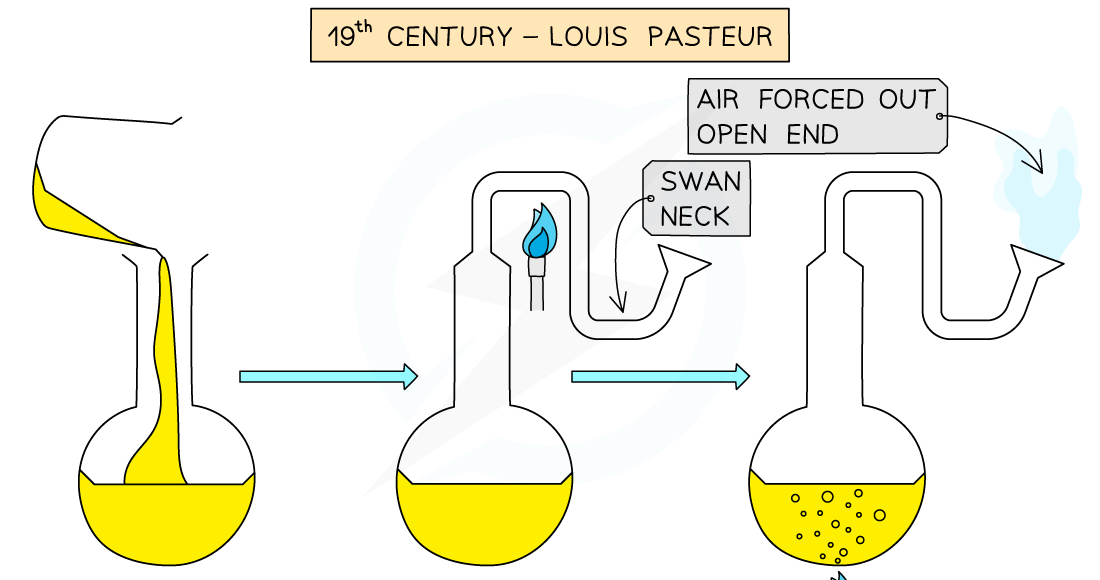
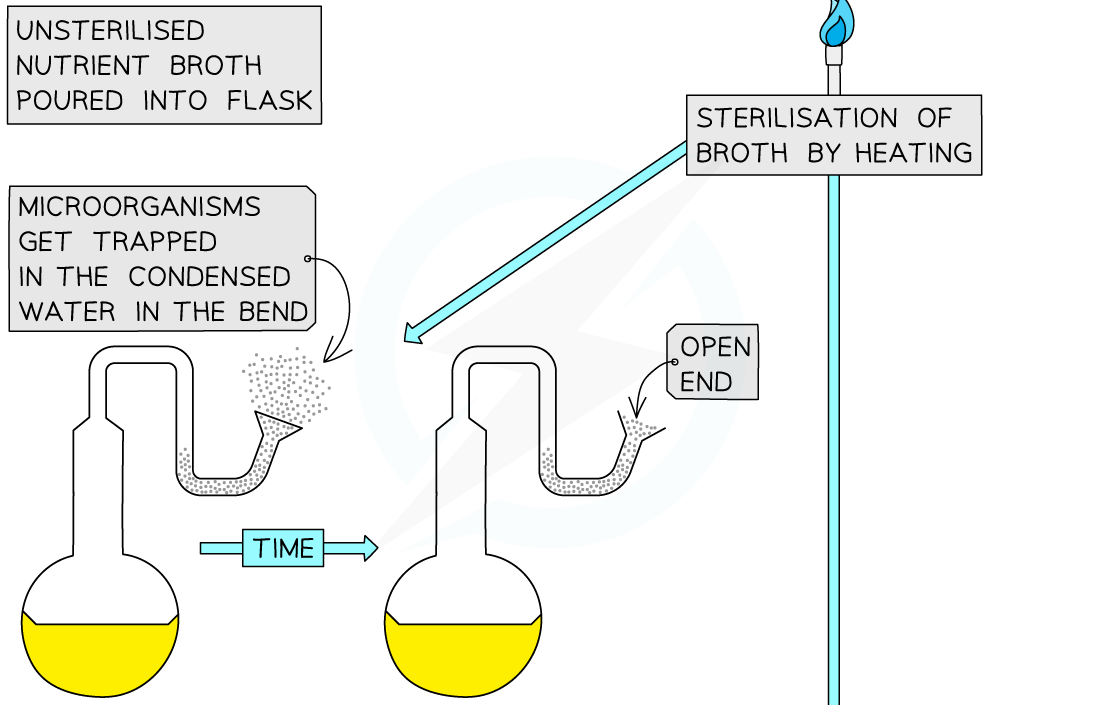

Experiments disproving spontaneous generation
Pasteur's Experiments
Louis Pasteur's experiments
- Louis Pasteur's experiments were designed to verify the principle that cells can only come from pre-existing cells
- To demonstrate this Pasteur used swan neck flasks (flasks with S-shaped necks) which trapped the microorganisms in the bend of the neck
- Pasteur added nutrient broth to the flasks then boiled them to sterilise
- With some of the flasks, Pasteur broke off the necks (leaving no bend)
- After a long period of time, Pasteur observed that the broth in the flasks with the snapped necks had gone cloudy whereas the broth in the swan neck flasks remained clear
- Thus Pasteur had shown that the swan necks prevented microorganisms in the air from entering the broth and that no organisms appeared spontaneously
The First Cells
- The Oparin-Haldine hypothesis is that, to create the original first cells from non-living material, the following four stages occurred:
- Simple organic compounds needed to be synthesised from inorganic molecules (this was demonstrated by Stanley Miller and Harold Urey)
- Then assembled into polymers
- Some of these polymers (it is thought to be RNA) developed the ability to self-replicate (which enables inheritance)
- Formation of membranes (by lipids) that surrounded the polymers creating packages with internal chemistry different from the surroundings

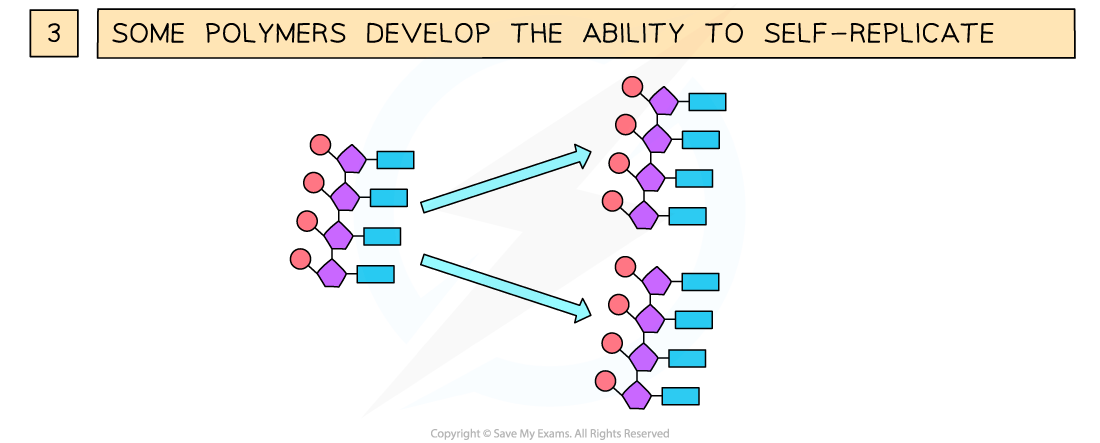
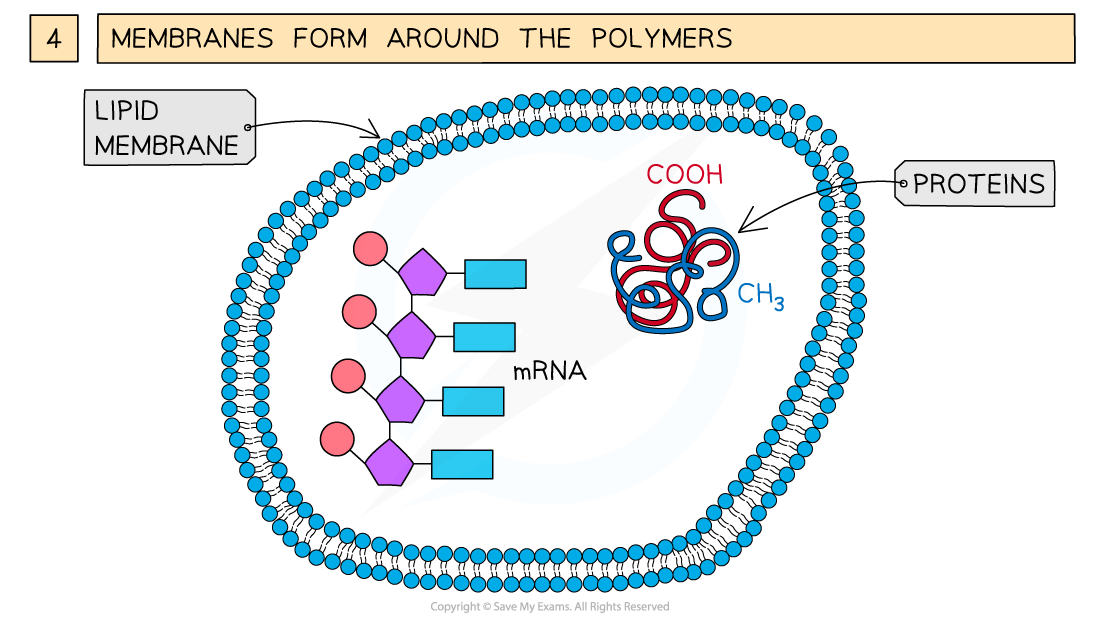
The key stages involved in life arising from non-living materials
Miller-Urey experiment
- Miller and Urey recreated the conditions thought to have existed on Earth prior to life, using a specific piece of apparatus
- The apparatus allowed them to:
- Boil water to produce steam reflecting the early primordial soup evaporating in the high temperatures that existed on Earth
- Mix the steam with a mixture of gases (including methane, hydrogen and ammonia) that recreated the atmosphere
- Add electrical discharges to the gases to stimulate lightning (one of the sources of energy available at the time)
- Cool the mixture (representing the condensation of water in the atmosphere)
- After a week Miller and Urey analysed the condensed mixture and found traces of simple organic molecules including amino acids
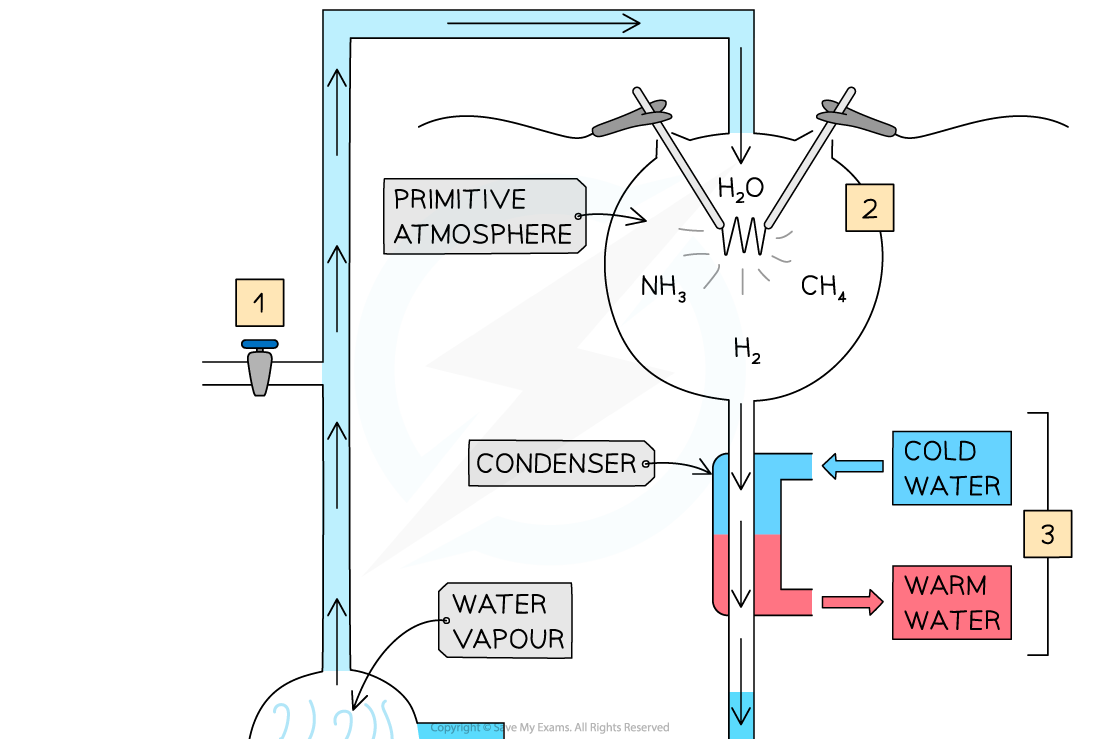
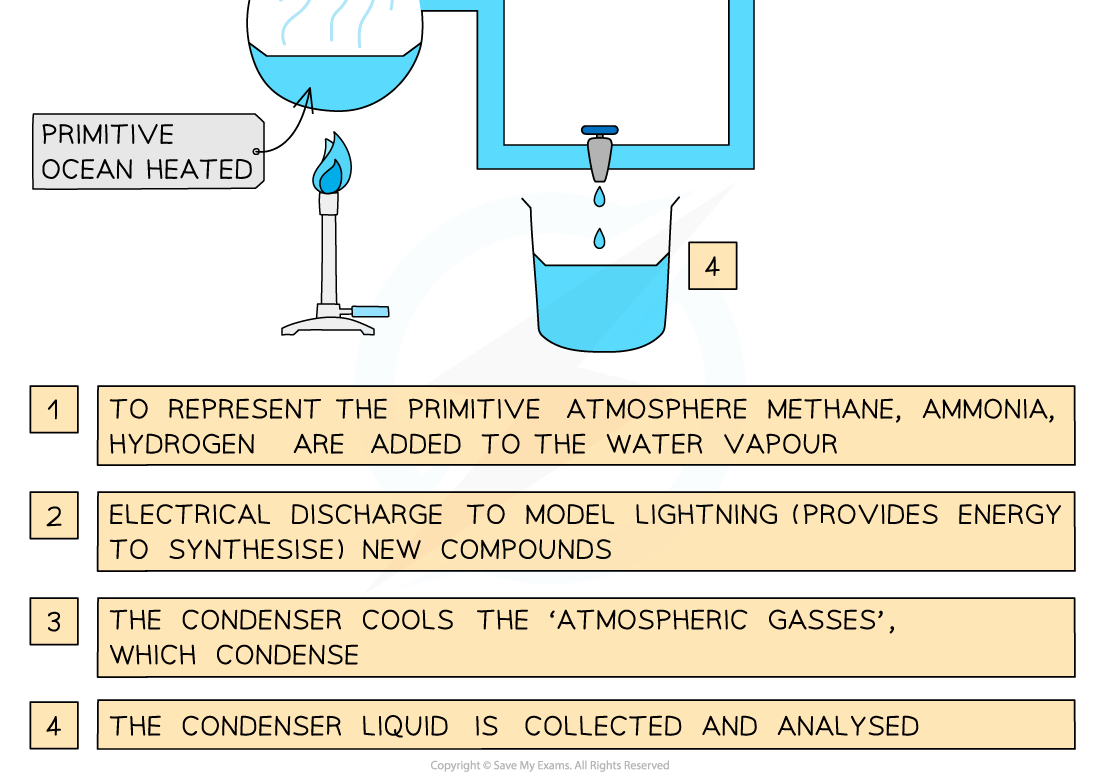
The apparatus used by Miller and Urey
Exam Tip
It is important to be able to explain how the experiments that Pasteur and Miller & Urey performed demonstrated the origin of cells.